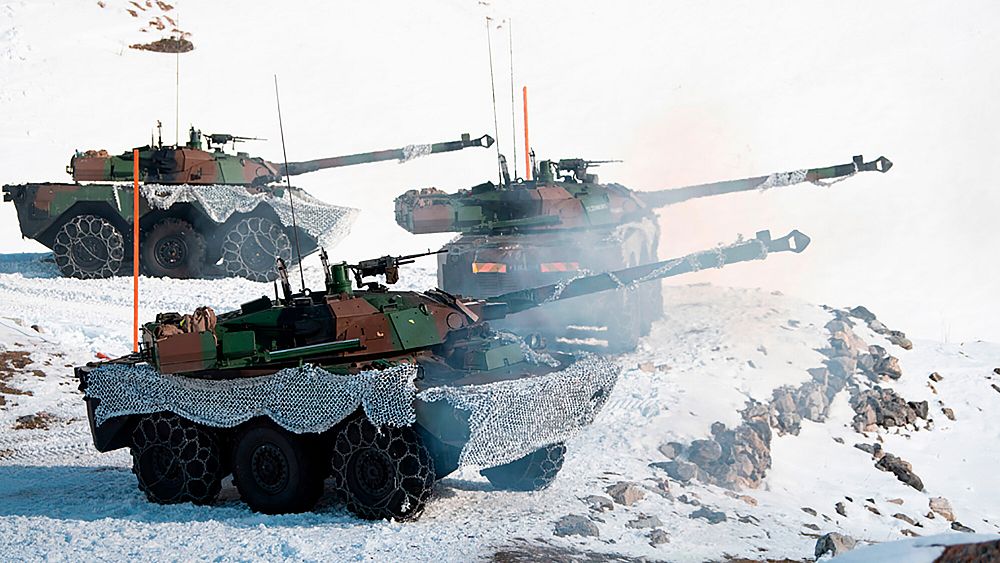
Ukraine continues to press Western allies for hardware and training assistance as it seeks to take advantage of confusion and low morale on the Russian side.
The commander of a battalion of the 37th Naval Infantry Brigade, the pseudonymous Major Spartanets, described his observations of these French tanks on the battlefield during their current deployment in the Donetsk region.
“They are used for supporting fire, because of their light armour,” he said. “Their armament is good, their observation instruments are very good. But unfortunately it’s light armour, which makes them unsuitable.”
In January, French President Emmanuel Macron promised the delivery of these highly mobile reconnaissance armoured vehicles on wheels, equipped with a formidable 105mm cannon. Four months later, they were already in service on the front line, according to the Ukrainian government.
But in this high-intensity war marked by constant heavy artillery strikes, their thin armour is proving to be a major weakness, according to Major Spartanets.
“There have been cases where a 152mm shell has exploded nearby and the shrapnel has pierced the vehicle,” noted the 34-year-old officer, who said this has already resulted in the death of the crew on one occasion.
“A shell exploded next to the vehicle, the fragments pierced the armour and the stock of ammunition (on board) was detonated”, says the Ukrainian officer. “The crew of four, unfortunately, remained inside; they were killed in the armoured vehicle.”
Stuck in the mud
According to Major Spartanets, some AMX-10 RCs also have problems with their gearboxes, perhaps, in his opinion, due to their use on dirt roads.
“Sending these vehicles (to the attack) to be destroyed is (…) pointless because it is a risk mainly for the crew”, said the officer, without specifying the number of these French armoured vehicles in his brigade. He refused to show AFP any AMX-10 RCs deployed at the front.
French military expert Michel Goya noted on Twitter in January that the high mobility of these armoured vehicles made them very useful “for use in ‘fire brigade’ units behind the front line” or for quickly exploiting gaps in the front line.
The AMX-10 RC is not, however, designed “for combat against battle tanks with heavier guns”, he added, pointing out that its armour was too weak to cope with “all the anti-tank weaponry of the modern battlefield”.
The Oryx website, which tracks equipment losses on both sides based on images published freely on the internet, claims that at least three AMX-10 RCs have been “abandoned” after being rendered unusable during fighting at the front.
Major Spartanets claims that his soldiers underwent a month’s training in France to learn how to use the vehicle, but that this was not enough to fully master it.
Better American armour
According to the French army, the AMX-10 RC, which weighs around 20 tonnes, is protected against light infantry weapons. Developed in the 1970s, it is gradually being replaced in France by a more modern armoured vehicle, the Jaguar.
Major Spartanets claims that the armour of the American Oshkosh and British Husky light transport vehicles, also delivered to Kyiv, are more suitable and effective than that of the AMX-10 RC. Both are designed to withstand improvised explosive devices and ambushes.
He showed AFP two Oshkosh used by his unit. One of them had its bonnet slightly damaged by shrapnel. “Otherwise, in terms of protection, the vehicle is very cool,” says Spartanets.
When an Oshkosh explodes on a mine, a wheel may be blown off, “but the infantry aren’t worried”, he explains. Conversely, when a Soviet-designed transport vehicle, such as a BMP or BMD, runs over a mine, “it’s very sad for the crew and the vehicle”.









